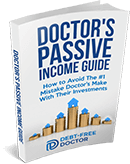Tax-Efficient Retirement Withdrawal Strategies for Income Planning
Have you thought about how you’ll actually pull money from your retirement accounts once you stop working?
Saving for decades is one part of the journey, but spending it wisely is another. The way you sequence your withdrawals, manage taxable accounts, and plan around Social Security benefits can mean the difference between financial freedom and unnecessary higher taxes.
If you’d prefer to watch me break this down, here’s my YouTube video on retirement withdrawals…
Understanding Tax-Advantaged Accounts and Their Roles
When people think of retirement savings, they often lump everything together. In reality, you have several types of tax-advantaged accounts and each comes with its own tax implications.
Traditional IRA and 401k
Traditional IRAs and 401(k)s are funded with pre-tax dollars. You lowered your taxable income during your working years, but withdrawals in retirement are taxed as ordinary income.
This means the amount of money you take out could push you into a higher bracket, raising your tax burden and Medicare premiums.
Roth accounts
Roth accounts, such as Roth IRAs and Roth 401(k)s, work the opposite way. You contribute after-tax dollars up front, but enjoy tax-free withdrawals later.
Used strategically, they can give you flexibility in both your early and later years of retirement.
Taxable brokerage accounts
Taxable brokerage accounts also play a big role. They don’t offer the same breaks as retirement accounts, but they provide unmatched flexibility.
Here, you pay annual taxes on dividends and owe long-term capital gains when you sell. Because you can access these accounts at any age, they often serve as a bridge in the first year of retirement before other accounts become available.
Finally, many retirees still hold savings accounts, mutual funds, or even insurance products. While these may not maximize tax efficiency, they can provide steady cash flow when markets are volatile.
Common Misconceptions
Many people assume all accounts are taxed the same. In reality, each has different tax treatments, and mixing them without a withdrawal plan is risky.
Another myth is that tapping into your money right away is always best. The truth? Timing matters. Knowing the rules gives you more control and more peace of mind.
Sequencing Withdrawals: Which Account to Tap First
The sequence of retirement withdrawals matters almost as much as the size of your retirement assets. Think of it like a chess game where every move affects your taxes, your future pension income, and even your Medicare premiums.
Many retirees begin with taxable investment accounts. This allows tax-deferred accounts like traditional IRAs to continue growing. If your investments have performed well, you may pay a lower rate on long-term capital gains compared to ordinary income tax rates.
In your 60s, it often makes sense to take smaller amounts from tax-deferred accounts to avoid a big spike later when RMDs begin.
Saving Roth accounts for last gives you a flexible, tax-free account that you can tap during volatile markets or high-income years.
Done right, this sequencing helps avoid sliding into a higher bracket and keeps your sources of income balanced.
Why Sequencing Impacts More Than Taxes
Withdrawal sequencing also affects how much of your Social Security benefits are taxed. Too much income from the wrong accounts can make up to 85% of benefits taxable.
It also impacts Medicare premiums through IRMAA surcharges. A tax-efficient withdrawal strategy protects not just your portfolio, but your lifestyle expenses too.
Roth IRAs and Roth Conversions: Timing Is Everything
A well-timed Roth conversion can be one of the smartest tax strategies in retirement. Converting a portion of a traditional IRA to a Roth account in years where you’re in a lower tax bracket helps you lock in taxes at today’s rates and create tax-free accounts for the future.
Doing conversions in smaller amounts over several years avoids pushing yourself into a higher bracket. This approach smooths out income taxes and gives you more control later when RMDs and pension income kick in.
Roth conversions also play a role in estate planning. Leaving heirs a Roth IRA means they can enjoy tax-free withdrawals instead of paying ordinary income tax rates on traditional accounts. For families in the United States and abroad, this can be a legacy worth careful planning.
Required Minimum Distributions (RMDs): Planning Ahead
RMDs are unavoidable for most tax-deferred accounts. Starting at age 73, the IRS requires you to withdraw a calculated amount based on your balance and life expectancy tables.
Ignoring RMDs is costly, with penalties as high as 50% of the required amount. Planning ahead—by drawing from accounts early or using Roth conversions—can shrink your future RMDs and prevent a tax spike.
QCDs
Another smart tactic is Qualified Charitable Distributions (QCDs), where you give directly to charity from an IRA, satisfy the RMD, and lower your taxable income at the same time.
Capital Gains and Tax-Loss Harvesting
If you hold taxable brokerage accounts, you’ll want to master capital gains and tax-loss harvesting. Selling investments you’ve held for more than a year qualifies for long-term capital gains, typically taxed at a lower rate than your job’s ordinary income tax rates.
Tax-loss harvesting is a way to use down years to your advantage. Selling losing investments allows you to offset gains, reduce tax liability, and even offset up to $3,000 of ordinary income each year. Any leftover losses carry forward indefinitely, making them a useful tool for managing tax-efficient withdrawals across later years of retirement.
Social Security and Tax Optimization
Many retirees are surprised to learn that Social Security benefits are taxable. Depending on your combined income, up to 85% of your benefits may be included in taxable income.
Coordinating retirement withdrawals with the timing of Social Security is critical. Drawing from Roth accounts or tax-free accounts in early years can keep your combined income low and your benefits largely untaxed. On the other hand, pulling too much from tax-deferred accounts in a single year can trigger higher taxes on both benefits and Medicare premiums.
Managing Medicare Premiums and Taxable Income
Medicare premiums are tied directly to your income. Withdrawals from traditional IRAs, pension plans, or taxable accounts count toward your Modified Adjusted Gross Income. Go over the IRMAA thresholds and you’ll pay more for Medicare Part B and Part D.
That’s why many retirees use Roth conversions early or spread withdrawals across various sources of income. Even smaller amounts drawn strategically can help you avoid surcharges. Working with a financial planner or tax advisor ensures you don’t miss these details.
Using Annuities Within a Tax-Efficient Withdrawal Plan
Annuities can be controversial, but when used carefully, they provide predictable retirement income while spreading out tax liability. Deferred annuities grow tax-deferred until you start withdrawing, while immediate annuities create steady checks you can count on.
The tax treatment depends on the product, but annuities can be part of a retirement plan that balances cash flow, controls tax implications, and provides peace of mind in volatile markets.
Estate Planning with Tax Efficiency in Mind
Estate planning isn’t just for the wealthy. Anyone with significant retirement assets should think about how their accounts will be taxed when passed on. Roth accounts are excellent tools for leaving heirs tax-free withdrawals, while trusts and gifting strategies can reduce estate size and future tax burden.
Updating your estate plan to reflect changing tax laws and personal circumstances ensures your legacy is passed on without avoidable taxes. Financial advisers and estate attorneys can provide legal advice and advisory services to structure this properly.
Planning for Healthcare Costs in Retirement
Healthcare often becomes the largest expense in retirement. Using Health Savings Accounts (HSAs), where available, is one of the best tax-efficient withdrawal strategies. Contributions are deductible, growth is tax-free, and withdrawals for qualified expenses are tax-free as well.
Even if you no longer contribute, an HSA can cover later years medical bills, Medicare premiums, or long-term care insurance. Planning for these expenses as part of your withdrawal plan keeps your budget stable and your hard-earned savings intact.
Navigating State Taxes and Retirement Withdrawals
Federal planning is only half the story. Different states treat pension income, retirement withdrawals, and even state pension payments differently. Some states tax retirement income heavily, while others don’t tax it at all.
Your choice of residence in retirement could save you thousands annually. Understanding how tax laws apply where you live—or where you might move—ensures your strategy reflects the most effective way to manage your wealth.
Tax Implications of Withdrawing from Traditional vs. Roth 401(k)
Finally, let’s address the workplace accounts. Traditional 401(k) withdrawals are always taxed as ordinary income. Roth 401(k) withdrawals are generally tax-free but still subject to RMDs unless you roll them into a Roth IRA.
Mixing withdrawals from both can give you flexibility, especially when coordinated with other income sources such as rental income, pensions, or investments. Ignoring the rules, however, could result in higher taxes and less efficient use of your money.
The Bottom Line
Designing a tax-efficient retirement withdrawal strategy isn’t about avoiding taxes altogether. It’s about using careful planning and knowledge of tax-advantaged accounts, tax-deferred accounts, and taxable brokerage accounts to minimize your overall bill and protect your lifestyle.
The right mix of sequencing, Roth conversions, qualified charitable distributions, and smart timing ensures your retirement plans last longer and create real peace of mind. Since every financial situation is unique, working with a financial adviser, investment adviser, or tax advisor helps you personalize these strategies and avoid mistakes.
There’s no guarantee of future results, and past performance never ensures the same outcome. But by focusing on tax-efficient withdrawals, you give yourself the best shot at keeping more of your wealth and enjoying the retirement you’ve worked so hard for.
Join the Passive Investors Circle


